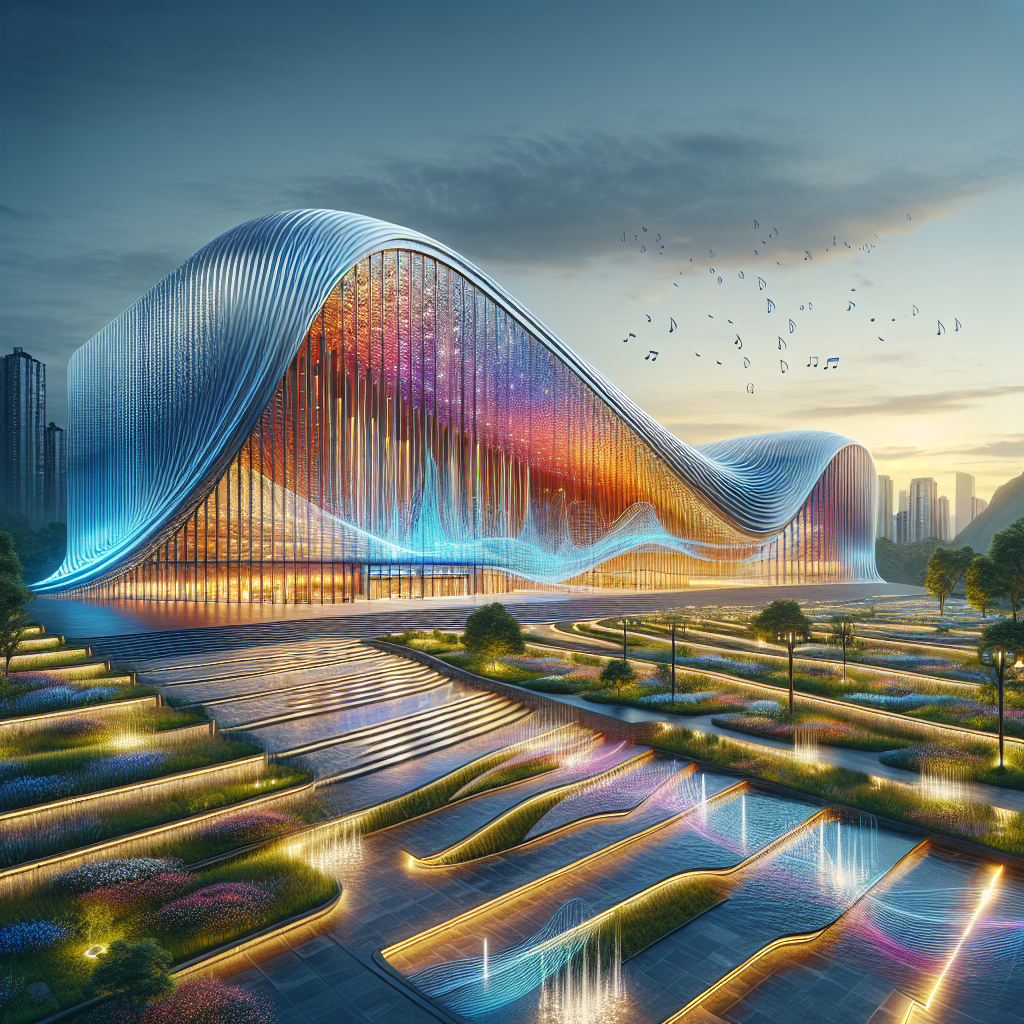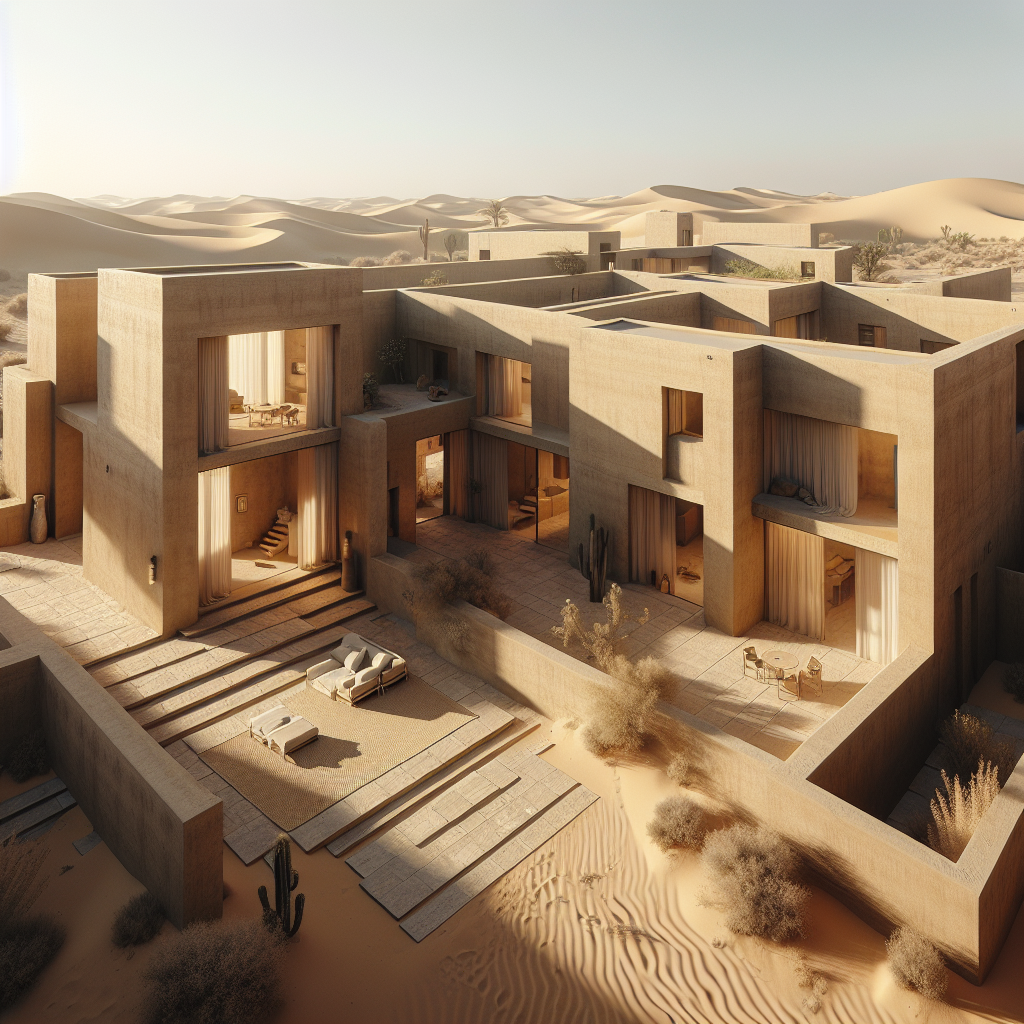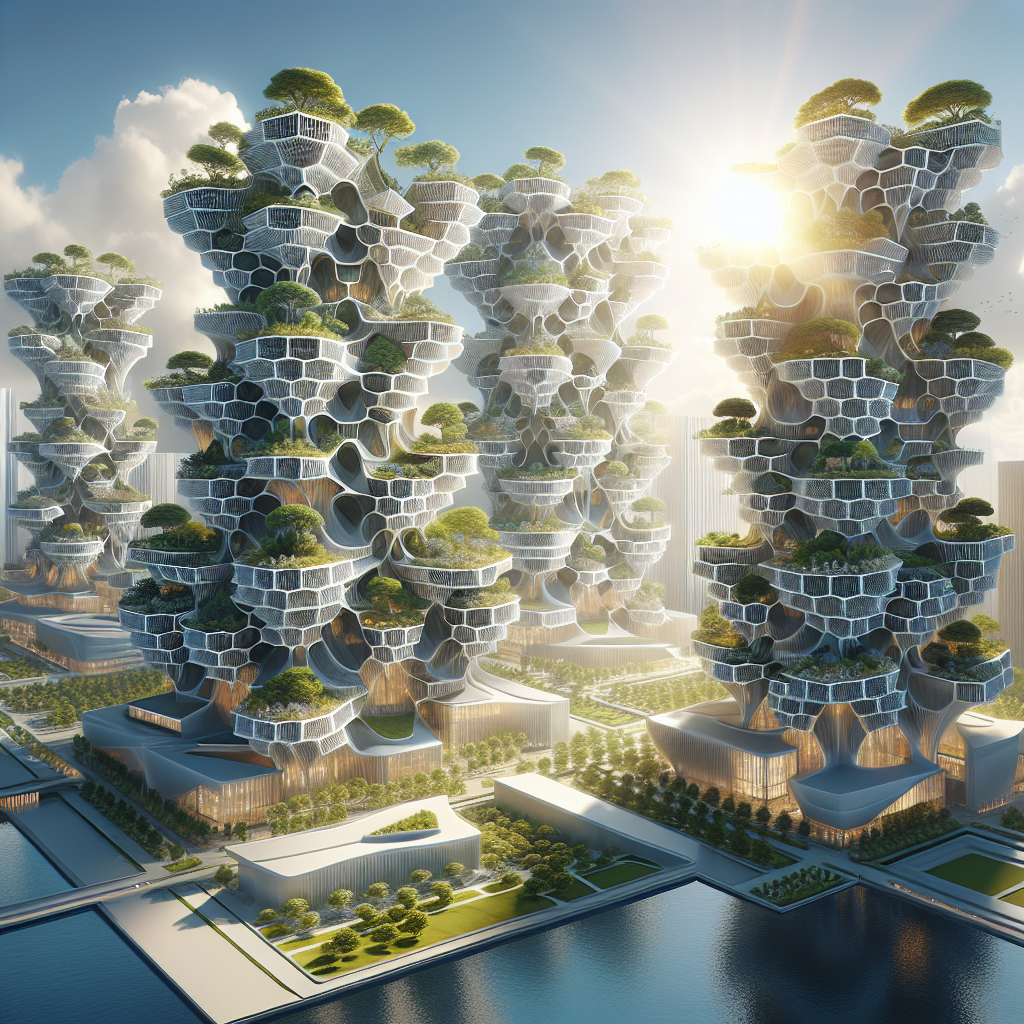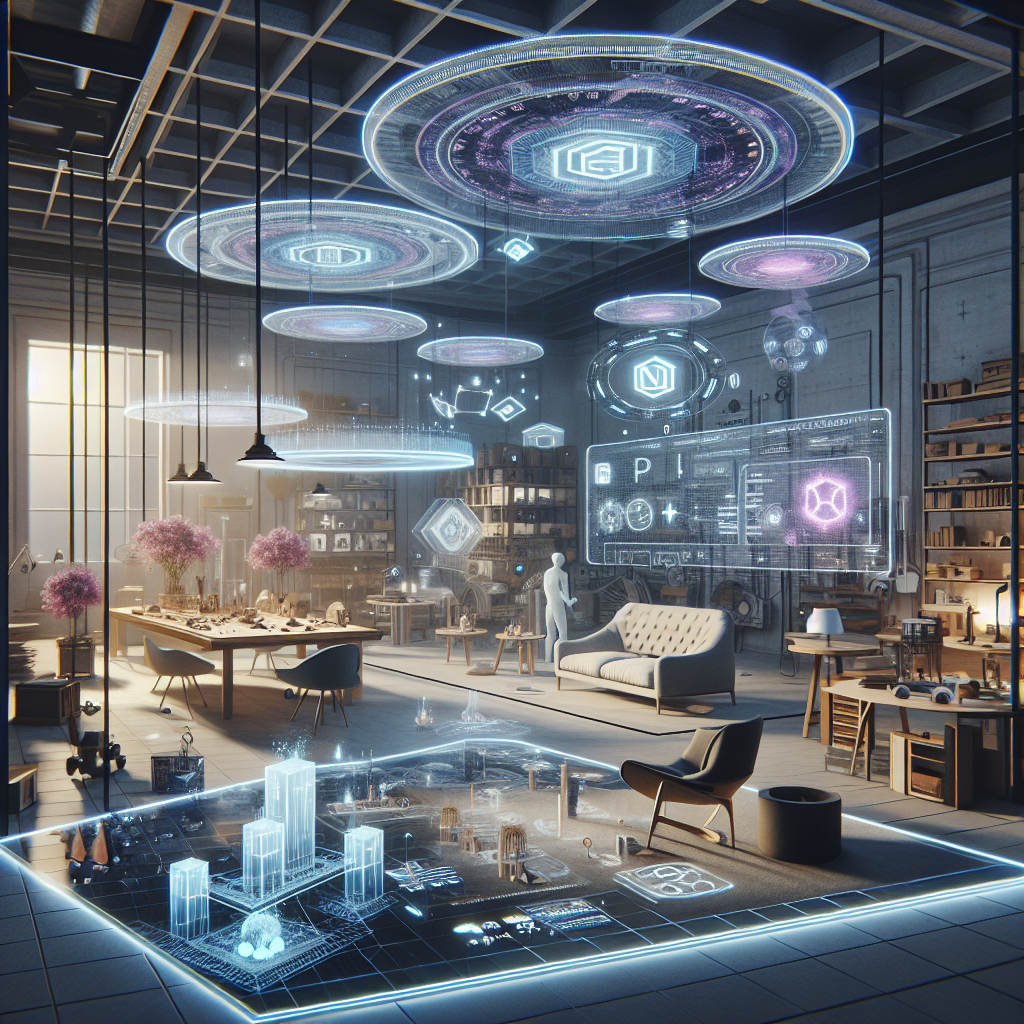Audiovisual synergy building: shapes that capture and echo music
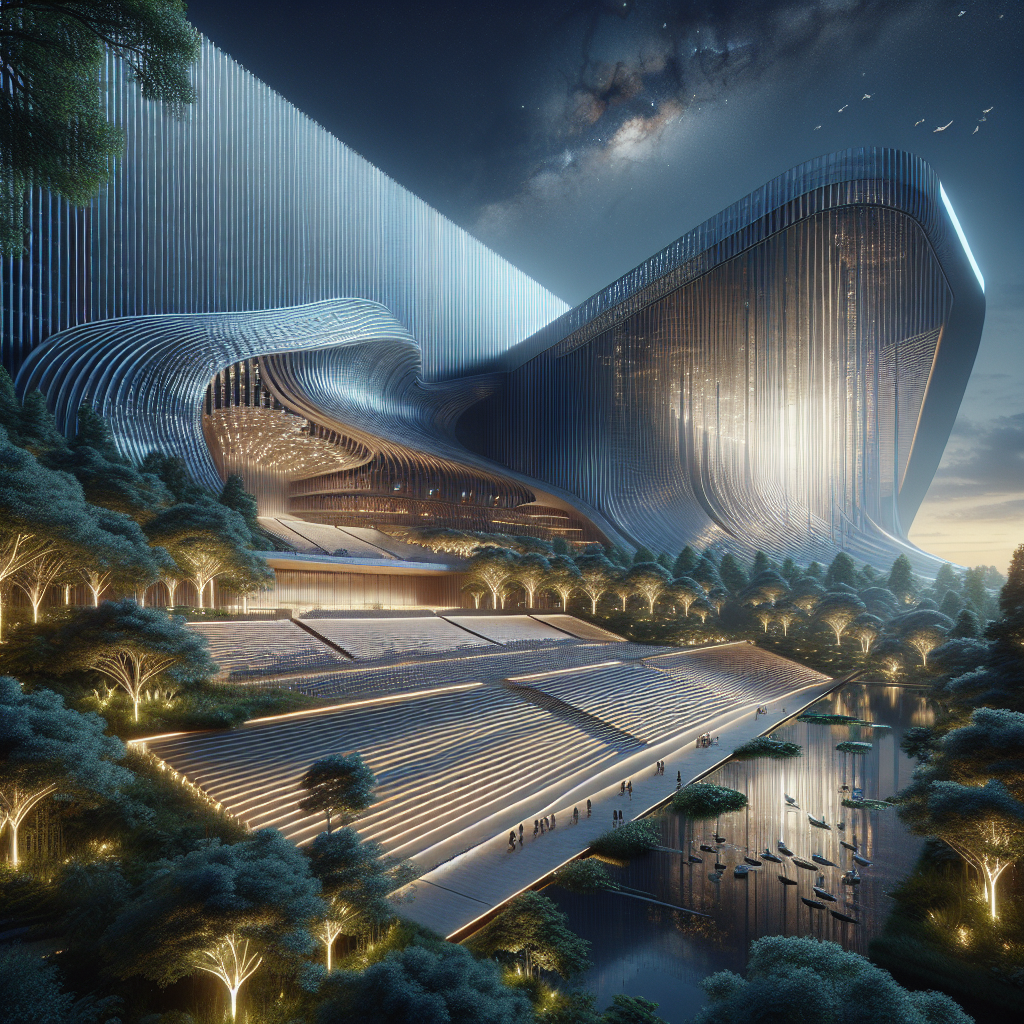
Audiovisual Synergy Building: Shapes That Capture and Echo Music
In the sophisticated dance between architecture and music, there exists a profound harmony that transcends mere aesthetics. The interplay of form, material, and sound has long fascinated architects and designers, driving them to create spaces that not only resonate acoustically but also visually echo the rhythms and melodies they house. This phenomenon, known as audiovisual synergy, has emerged as a captivating trend in contemporary architecture, inspiring groundbreaking designs that blur the boundaries between auditory experience and spatial perception.
Architectural Forms as Visual Melodies
Architecture, at its core, is a composition of forms, textures, and spaces. When architects deliberately infuse their designs with musical inspiration, the results can be extraordinary. Consider the iconic Elbphilharmonie in Hamburg, designed by Herzog & de Meuron. Its undulating glass façade evokes the rhythmic waves of sound, creating a visual symphony that mirrors the music performed within. The building’s intricate curves and reflective surfaces not only enhance its acoustic properties but also visually communicate the fluidity and dynamism of music itself.
Similarly, the Harbin Opera House by MAD Architects exemplifies how architectural shapes can embody musical expression. Its sinuous, organic forms rise gracefully from the landscape, echoing the crescendos and diminuendos of an operatic performance. Inside, sweeping wooden interiors further enhance the auditory experience, enveloping visitors in a warm, resonant embrace that harmonizes visual and acoustic sensations.
Innovative Materials Enhancing Audiovisual Experiences
The selection of materials plays a crucial role in achieving audiovisual synergy. Advances in technology and material science have empowered architects to experiment with novel substances that amplify both visual appeal and acoustic performance. One such innovation is the use of parametric design, where algorithms generate complex, music-inspired patterns and structures. These intricate forms not only captivate the eye but also significantly improve sound diffusion and absorption, creating spaces that are as acoustically refined as they are visually striking.
A notable example is the Dubai Opera House, designed by Atkins. Its boat-shaped structure, inspired by traditional Arabian dhows, incorporates parametric patterns that subtly modulate sound reflections, ensuring optimal acoustic clarity. The building’s visually arresting façade, with its rhythmic geometric motifs, mirrors the intricate patterns found in musical compositions, creating a seamless audiovisual experience.
Interactive Installations: Engaging Audiences Through Audiovisual Design
Beyond permanent structures, temporary installations have become fertile ground for exploring audiovisual synergy. These immersive experiences invite audiences to engage directly with the interplay of sound and form, transforming passive observation into active participation. For instance, at the recent Salone del Mobile Milano, interactive installations captivated visitors by merging auditory stimuli with responsive visual elements. Such projects highlight the growing trend of integrating sensory design into architectural and interior spaces, enhancing user engagement and emotional resonance.
An exemplary case is the Sonic Bubble Installations, translucent spheres producing ambient music, featured in a recent Mainifesto article on Sonic Bubble Installations. Visitors stepping into these ethereal spheres triggered subtle shifts in sound and illumination, creating personalized audiovisual experiences that blurred the lines between observer and performer.
Biophilic Design Meets Audiovisual Synergy
The convergence of biophilic design and audiovisual synergy represents another compelling evolution in contemporary architecture. Biophilic principles, which emphasize connections to nature, align harmoniously with the sensory-rich approach of audiovisual design. Spaces designed with natural elements, such as living walls, water features, and organic materials, inherently enhance acoustic comfort and visual tranquility.
A striking example is the Jewel Changi Airport in Singapore, designed by Safdie Architects. Its central Rain Vortex, the world’s tallest indoor waterfall, serves as both a visual centerpiece and an acoustic marvel. The gentle cascade of water creates soothing ambient sounds, while lush greenery and organic forms contribute to a serene, multisensory environment. This harmonious integration of nature and audiovisual elements exemplifies how biophilic design can profoundly impact human well-being, as explored in Mainifesto’s article on Biophilic Design and Its Impact on Human Health and Well-being.
Technology as a Catalyst for Audiovisual Innovation
Technological advancements continue to revolutionize the possibilities of audiovisual synergy in architecture. From augmented reality (AR) and virtual reality (VR) to sophisticated acoustic modeling software, architects now possess powerful tools to visualize and optimize the interplay between sound and space. AR, in particular, offers unprecedented opportunities for architects and designers to overlay digital auditory and visual elements onto physical environments, creating hybrid spaces that transcend traditional sensory boundaries.
Mainifesto’s exploration of Augmented Reality: The New Frontier in Design Innovation highlights how AR technology enables architects to simulate and refine audiovisual experiences before construction even begins. This predictive capability ensures that the final built environment achieves the desired sensory impact, fostering deeper emotional connections with users.
The Future of Audiovisual Synergy in Architecture
As cities evolve and urban populations grow, the demand for spaces that provide meaningful sensory experiences will only intensify. Architects and designers must continue to innovate, drawing inspiration from music and sound to create environments that resonate deeply with human emotions and perceptions. The upcoming Paris 2024 Summer Olympic Games, for instance, promise to showcase groundbreaking architectural projects that embody audiovisual synergy, transforming the cityscape into a vibrant symphony of form and sound, as discussed in Mainifesto’s analysis of How the Summer Olympic Games of Paris 2024 Will Affect the City in Terms of Architecture and Design.
Moreover, sustainability will increasingly inform audiovisual design practices. Architects will seek eco-friendly materials and energy-efficient technologies that enhance sensory experiences without compromising environmental responsibility. The integration of renewable energy sources, such as solar-powered design and natural ventilation systems, will further amplify the synergy between visual aesthetics, acoustic performance, and ecological consciousness.
Ultimately, the future of audiovisual synergy in architecture lies in its capacity to enrich human experiences, foster emotional connections, and inspire awe. By thoughtfully orchestrating the interplay of form, material, and sound, architects can create spaces that not only capture and echo music but also resonate profoundly with the human spirit.
Conclusion: Harmonizing Space and Sound
Audiovisual synergy represents a transformative approach to architecture, inviting us to reconsider how we perceive and interact with built environments. Through innovative forms, materials, and technologies, architects are crafting spaces that transcend mere functionality, becoming dynamic expressions of musicality and sensory delight. As we continue to explore this captivating intersection of sound and space, we unlock new possibilities for creating architecture that speaks not only to our eyes and ears but also to our hearts and souls.


